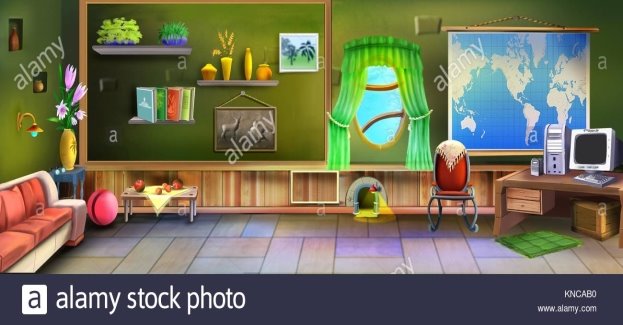Урок "Something new to watch"
План-конспект відкритого уроку
з англійської мови
для 6 класу
«Something new to watch»
(за підручником Naomi Simmons «Family and friends 4»)
Підготувала вчитель
англійської мови
Баранюк Олена Сергіївна
2018-2019 н. р.
Topic: Something new to watch (6 клас)
Objectives:to identify words for audio-visual equipment, to learn to use the infinitive of purpose, read and understand a TV guide, identify words and their meanings in a text, check the meanings of words in a dictionary, complete sentences with the correct word.
Equipment: CD tracks, videos, computer, Class Book, Grammar Book.
Хід уроку
I.Початок уроку. Організаційний момент
Підготовка до сприйняття іншомовного мовлення.
Greeting:
Good morning, children! Nice to see you all!
On today`s lesson we`re going to speak about TV programmes.
1.Warming up
1.1.Look at the picture for 15 seconds and try to remember as many objects as you can.

1. 2. Sing “How often...?” from Lesson 3 to energize the class at the start of the lesson.
How often do you watch cartoons?
Three times a week.
Three times a week.
I watch cartoons three times a week.
How often do you watch a film?
Once a week...
I watch a film once a week.
How often do you go to the beach?
Twice a year...
How often do you see your friends?
Every day...
2. Lead – in
Look at the board! There are 4 categories in a table: Film, Cartoon, Sport, Documentary. Tell me what your favourite TV programmes are. At the end children vote and find the most popular film and TV programme.
II. Основна частина уроку.
- Listening and reading Very nice. Look at the pictures and the titles of the programmes. What would you like to watch and explain why?
- You are going to read and hear a description of the TV programmes. Children follow the text in their books.
https://www.youtube.com/watch?v=WHR7BNdQi34
2.1 Now answer my questions:
- Who wants to be the best supervillain?
- What does Gru want to steal?
- Where do the Simpsons live?
- What does Homer like to eat?
- Will Brazil play vs Italy for a place in this year’s World Cup final?
- What animals live on the Galapagos Islands?
1.2 Dictionary Work: Let`s divide into two groups. Read the list and find and underline the new words in the text. Each group will have four words. Guess their meanings by looking at the surrounding text. Then look up the words in the Dictionary in the Workbook to check their meanings.
2. Now read the sentences silently and complete them with a missing word. Children do the exercise individually and then check it.
1. Gru wants to steal the ..........................(moon)
2. Gru needs the little girls to help him with his .......................(plan)
3. Lila Simpson plays the .................................(saxophone)
4. Homer Simpson is Bart and Lisa’s ......................(dad)
5. The match starts at ................................(6:20p.m.)
6. The Galapagos is a group of ...............................(islands)
3. Relaxation Period.
https://www.youtube.com/watch?v=TzAvFtQv3oQ
4.Optional activity. Children have 2 or 3 minutes to learn the words steal, doughnut, villain, get into trouble, kick-off, stadium, giant, play a trick on. There are some sentences on the board with the missing word from the list. The child who calls out the correct answer first comes to the board and writes the word in the space.
- Mary likes to bake ………………………………….
- Jerry wanted to…………………. mother’s money.
- Black Friday represents a ……………… to the holiday shopping season.
- The……………. in the fairy tale followed the children in the forest in order to steal the food from their basket.
- The children …………………… their teacher.
5.Grammarwork.
As you know we use how often...? to ask someone how frequently they do something. To talk about how frequently we do things, we can use the expression once/twice/three times a + day/ week/month/year.
Sally goes on holiday twice a year.
We also use every+hour/afternoon/day/Tuesday/week/month/year.
We play basketball every Friday.
Let’s write the exercise. Rewrite the expressions. Use every, once, twice or three times.
- On Mondays, Tuesdays and Fridays - three times a week
- On Saturdays and Sundays - ...............................weekend
- At 10a.m and 2p.m.- .............................................a day
- In January, May and October - ..............................a year
- O the first Friday of every June - ...........................year
- On Sundays - ....................................................... Sunday
- At 10 o’clock every day - ......................................a day
- Every Tuesday and Thursday - .............................. a week
- Om my birthday - ...................................................year
- Every day before breakfast - .................................morning
5. Let’s play game. The class is divided into two groups. Group A stands up when they hear words spelt with er, and Group B stands up when they hear words spelt with or. (mother, father, September, visitor, actor, doctor, singer, baker, tailor, dancer, December).
ІІІ Заключна частина уроку
Summarizing: We`ve done a good work today.
Homework.
The lesson is over. Good-bye!


про публікацію авторської розробки
Додати розробку
